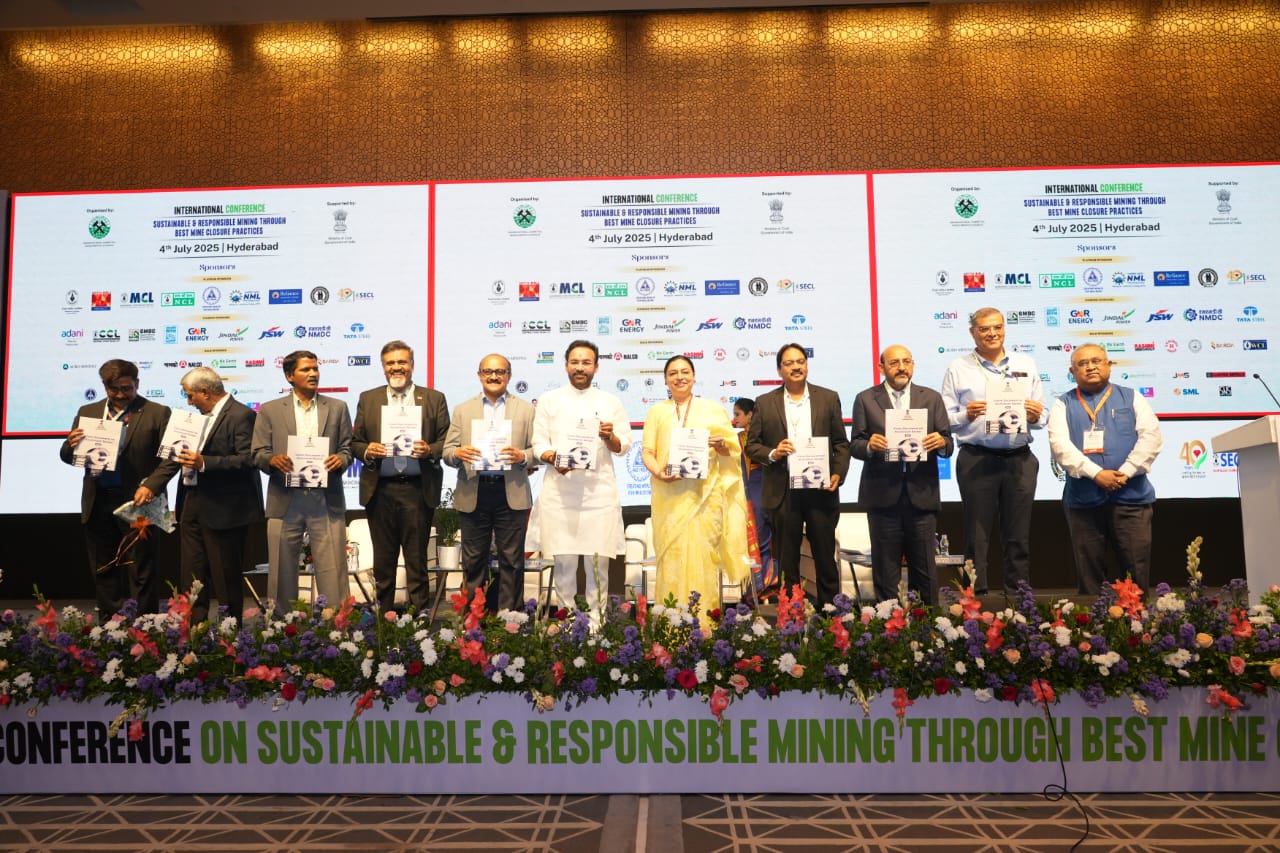Hyderabad: Union Minister for Coal and Mines, Shri G. Kishan Reddy, today unveiled the “Aluminium Vision Document” at the International Conference on Sustainable and Responsible Mining through Best Mine Closure Practices in Hyderabad. The document outlines a strategic roadmap to significantly boost India’s aluminium production and establish a globally competitive and environmentally responsible aluminium industry by 2047.
The vision document, developed through extensive consultations with key industry stakeholders including National Aluminium Company Ltd. (NALCO), Hindalco Industries Ltd., Vedanta Ltd., Jawaharlal Nehru Aluminium Research Development and Design Centre (JNARDDC), and leading associations like the Aluminium Association of India (AAI), Aluminium Secondary Manufacturers Association (ASMA), and the Metal Recycling Association of India (MRAI), aims to align with Prime Minister Shri Narendra Modi’s vision of a “Viksit Bharat by 2047” (Developed India by 2047).
Key Highlights of the Aluminium Vision Document:
- Sixfold Production Increase: The document targets a sixfold increase in India’s aluminium production by 2047. As of 2024, India’s primary aluminium production was around 4.15 million tonnes, with a total capacity (including secondary) of 6-6.2 million tonnes.
- Bauxite Production Expansion: It aims to expand bauxite production capacity to 150 Million Tonnes Per Annum (MTPA). In April-May 2025, India’s bauxite production was 4.73 MT.
- Doubling Recycling Rate: A significant focus is placed on doubling the national aluminium recycling rate, promoting a circular economy and reducing the environmental footprint. Currently, India’s secondary aluminium capacity (largely dependent on imported scrap) is around 2.0 MT.
- Low-Carbon Technologies: The document emphasizes the adoption of low-carbon technologies for sustainable production.
- Raw Material Security: Targeted policy reforms and institutional mechanisms will be implemented to strengthen raw material security.
Shri Reddy underscored the aluminium sector’s crucial role in facilitating clean energy systems, electric mobility, and modern infrastructure, aligning with India’s broader developmental goals.
Contributions from Key Stakeholders:
- NALCO (National Aluminium Company Ltd.): A Navratna CPSE under the Ministry of Mines, NALCO posted a record net profit of ₹5,325 crore and revenue of ₹16,788 crore in FY25, driven by strong prices and operational efficiencies. They are undertaking expansion projects including alumina refinery, bauxite mines, smelter plant, and captive power plant.
- Hindalco Industries Ltd.: A major player in the global aluminium industry, Hindalco reported a record revenue of ₹2,38,496 crore and a consolidated PAT of ₹16,002 crore in FY25. They are focused on increasing recycled content and securing raw materials.
- Vedanta Ltd.: Vedanta is a significant contributor to India’s metals and minerals sector, with a focus on sustainable development. Their Lanjigarh Refinery achieved a record quarterly alumina output in Q1 FY26.
- JNARDDC (Jawaharlal Nehru Aluminium Research Development and Design Centre): This autonomous body under the Ministry of Mines serves as a “Centre of Excellence” for R&D in the aluminium industry, from bauxite to finished products, focusing on indigenous technologies, energy reduction, and environmental sustenance. They are also a designated sector expert for rare earth element recovery from red mud and promoting recycling.
- Aluminium Association of India (AAI): AAI represents the interests of the Indian aluminium industry.
- Aluminium Secondary Manufacturers Association (ASMA): ASMA focuses on the secondary aluminium sector, promoting recycling and responsible manufacturing.
- Metal Recycling Association of India (MRAI): MRAI is the apex organization representing the rapidly growing recycling industry in India, working to promote responsible recycling and integrate with government initiatives for a circular economy.
The “Viksit Bharat by 2047” vision aims to transform India into a developed nation by its 100th year of independence, focusing on unprecedented economic development, improved infrastructure, environmental sustainability, and empowered citizens. The Aluminium Vision Document is a testament to this overarching national objective, fostering a competitive and sustainable future for India’s aluminium industry.


